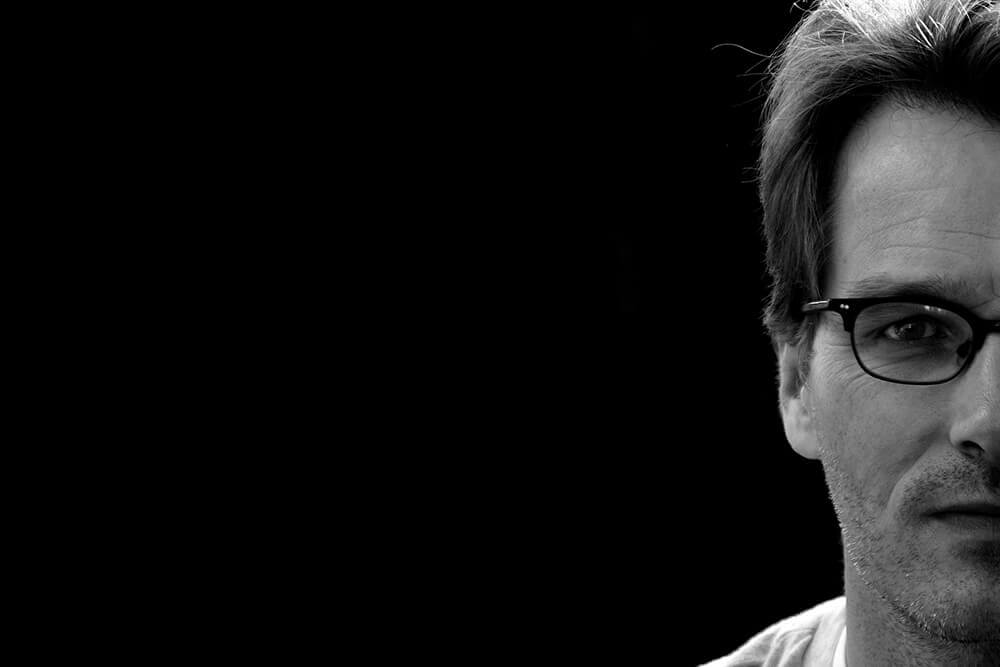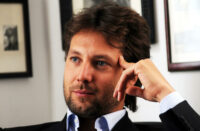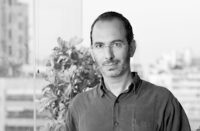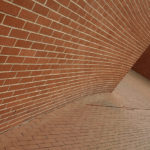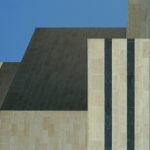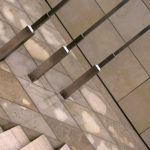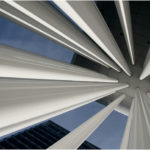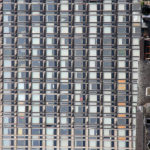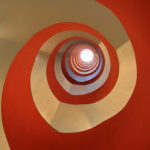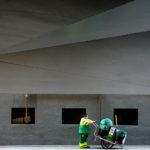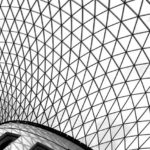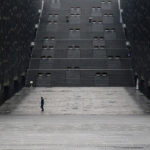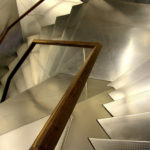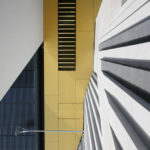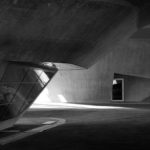ArchiTravel interviews the architectural photographer Thomas Holtkötter.
Interview by : Maria Anagnostou
Maria Anagnostou: What is the importance of architectural tourism?
Thomas Holtkötter: In my opinion it’s very important. If people are talking about their holidays they are always mentioning buildings – the roman cathedral they have visited, the iconic museum which has been seen or the silhouette of a small village. These are the impressions that will stay in their minds.
M.A.: What is the importance of traveling, especially for architects and humans in general?
T.H.: Without traveling the people would have a very limited horizon. Traveling gives you a view to other cultures, other people and other architecture. It will open your mind. Architects can learn a lot by traveling – building techniques in other, cultural influences in architecture, other building materials.
M.A.: What do you think is the added value that architecture creates within a city?
T.H.: Good architecture is adding a lot. It is creating new spaces, meeting points. It’s creating life – a good architectural building is often followed by other good architecture. Restaurants, pubs, theatre, apartments are also often following – sometimes one building or space is changing a whole area.
M.A.: What is the importance of architectural events worldwide? What are the profits for a city holding such kind of major events?
T.H.: Just have a look to the annual cultural capital of Europe – the profits are speaking for themselves: Upgraded and renovated buildings, tourists, cultural events like theatre, performances or music events, people that are proud of their city.
M.A.: What is your relationship with architecture? What attracted you to architecture, as a photographer?
T.H.: I studied architecture and in first instance I’m an architect. Therefore it was only a small step to architectural photography. The most attractive regarding architectural photography is for me to find the unusual point of view, to find the perspective which makes the shot unique comparing with others.
M.A.: We can say that most of architecture photos of buildings do not include any people. What are your thoughts about including people in your photos? Is it important to photograph a building in use, or by itself?
T.H.: This depends definitely on the type of building and the type of message the photographer wants to transmit. Personally I like blurred people in a strong, almost abstract architectural surrounding, like in very formal interior situations. Sometimes, I’m integrating people to show the scale of a building, sometimes for showing the function of a building. But all this may vary from case to case, some architectural photos are stronger without any people.
M.A.: What have been your most exciting and challenging architecture photography projects?
T.H.: I’m still searching for it. Till now I’m fascinated about the new TGV train station in Liège by Santiago Calatrava. Liège is very close to my hometown Aachen and therefore I have been there many times for photo sessions since its opening in 2008.
Beside this one I like abandoned places and there are some spots on my wish list like Pripjat in Ukraine ( this is the lost town in direct neighbourhood of Tschernobyl ), Battleship Island Hashima in Japan or Angkor Wat in Cambodia. Hopefully, I will get the chance to travel and photograph in one of these locations sometimes in future.
M.A.: Many architecture theorists and a lot of people think that contemporary architecture is designed in order to be well photographed. Doing this work, do you have this feeling of buildings that are not designed to serve specific needs but are rather iconic and self-promoting?
T.H.: Of course it’s easy to photograph contemporary and often spectacular architecture, but I don’t believe that this architecture has been designed only in order to be well photographed. If this would be the prime intention of the architect he should better look for another job. In first instance a building has to fulfil the requirements of the people which are living or working there. If this has been made in combination with good architecture, everybody is happy.
M.A.: Most of architects worldwide share the passion of photography for various reasons. At the same time, they usually photograph their projects on their own. What special skills and equipment would you say are required for architectural photography? How do architecture photographers do better this kind of work?
T.H.: First of all, your eyes are your most important tool. If you don’t see the specific detail, if you don’t find the right perspective your hardware, even if it is an expensive professional one, will not help you to catch a good photo. In September 2010 I gave a course for architectural photography at the Ludwig forum for International Art in Aachen, Germany. 50% of my students were architects.
The equipment can be very simple at the beginning:
A simple digital SLR camera with a wide angle lens and that’s it. The next step would be additional equipment like a slight tele lens for architectural details, an ultra wide angle lens for spectacular perspectives, a tripod, filters, etc. If you are falling seriously in love with architectural photography, you should look for a full frame digital SLR camera with tilt and shift lenses or even for a medium or large format camera with digital backs.
M.A.: What is the difference between seeing a picture of a building or a place and visiting the building or place yourself? How does architectural photography explore the relationship between the perception of space and the experience of space?
T.H.: In my opinion there is a big difference: A photo can give you a first impression of a building and its surrounding but it will never replace the feeling of being there. A photo is still two dimensional while the personal visit is always three dimensional. And not to forget the other factors, like the weather, the people, the noise, etc.
M.A.: At the end, can you please provide your personal proposal for 10 buildings which you think as the most important worldwide that someone must visit anyway?
- Angkor Wat, Cambodia
- The old town of Sanaa, Jemen
- Hagia Sophia, Istanbul, Turkey
- Cathedral of Cologne, Germany
- The Weissenhofsiedlung, Stuttgart, Germany
- Chrysler Building, New York, USA
- The government buildings by Oskar Niemeyer in Brasilia, Brazil
- The Guggenheim Museum by Frank O’ Gehry in Bilbao, Spain
- The Jewish Museum by Liebeskind, Berlin
- Any building by Santiago Calatrava
Featured Image © Thomas Holtkötter
More on : Thomas Holtkötter
About this Author : Maria Anagnostou
Work of Thomas Holtkötter

